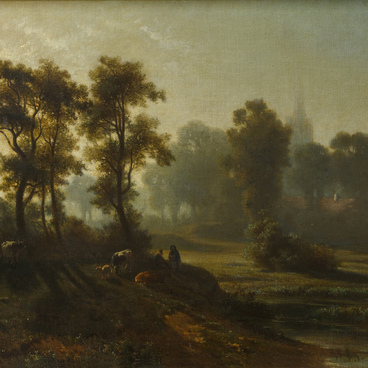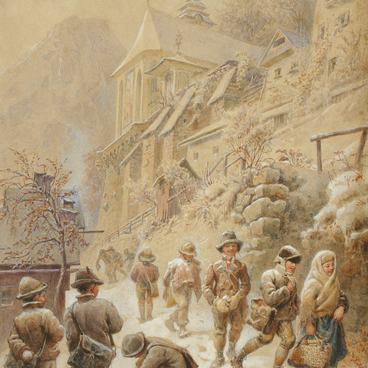Pieter Mulier the Elder was a Dutch Golden Age marine painter. He created both paintings and drawings with views of the sea. Little is known about the life of Pieter Mulier the Elder. He was born in Haarlem in the early 17th century. It is known that he studied under Simon de Vlieger — one of the first marine artists who depicted the beauty of the sea in all its various moods, from calmness to violent storms, and also painted battle scenes. In 1638, he became a member of the Haarlem Guild of Saint Luke. In 1637, his son, Pieter Mulier II, was born. He also became a painter and was nicknamed Tempesta which means “a storm” in Italian.
The paintings by Pieter Mulier the Elder are displayed at the Metropolitan Museum of Art in New York, the Rijksmuseum in Amsterdam, and the National Maritime Museum in Greenwich, London.
Pieter Mulier the Elder preferred to paint seascapes with ships buffeted by a violent sea under a gloomy sky. He continued the tradition of dramatic and emotional seascapes established by Jan Porcellis and Simon de Vlieger. “Marine” from the Primorye State Art Gallery is also one of such paintings. Like in other works by Pieter Mulier the Elder, the sky and the sea occupy most of the painting’s surface. Lead-colored clouds rise from the horizon, with the blue sky barely visible through them, and the gusts of wind from the left raising the waves which hit the ships and smash against the rocks. There is a small figure of a person standing on one of the rocks and holding on to a dried-up tree trunk.
The seascapes of Pieter Mulier the Elder are characterized by contrasting a darker foreground against a brightly illuminated background. However, the overall tone of the painting creates a cohesive composition portraying the violent North Sea. Gray tonal painting was pioneered by Jan Porcellis, an artist of Flemish origin, and the founder of Dutch realistic landscape. Pieter Mulier the Elder successfully adopted Porcellis’ discovery and made it one of his main artistic devices.
The paintings by Pieter Mulier the Elder are displayed at the Metropolitan Museum of Art in New York, the Rijksmuseum in Amsterdam, and the National Maritime Museum in Greenwich, London.
Pieter Mulier the Elder preferred to paint seascapes with ships buffeted by a violent sea under a gloomy sky. He continued the tradition of dramatic and emotional seascapes established by Jan Porcellis and Simon de Vlieger. “Marine” from the Primorye State Art Gallery is also one of such paintings. Like in other works by Pieter Mulier the Elder, the sky and the sea occupy most of the painting’s surface. Lead-colored clouds rise from the horizon, with the blue sky barely visible through them, and the gusts of wind from the left raising the waves which hit the ships and smash against the rocks. There is a small figure of a person standing on one of the rocks and holding on to a dried-up tree trunk.
The seascapes of Pieter Mulier the Elder are characterized by contrasting a darker foreground against a brightly illuminated background. However, the overall tone of the painting creates a cohesive composition portraying the violent North Sea. Gray tonal painting was pioneered by Jan Porcellis, an artist of Flemish origin, and the founder of Dutch realistic landscape. Pieter Mulier the Elder successfully adopted Porcellis’ discovery and made it one of his main artistic devices.


